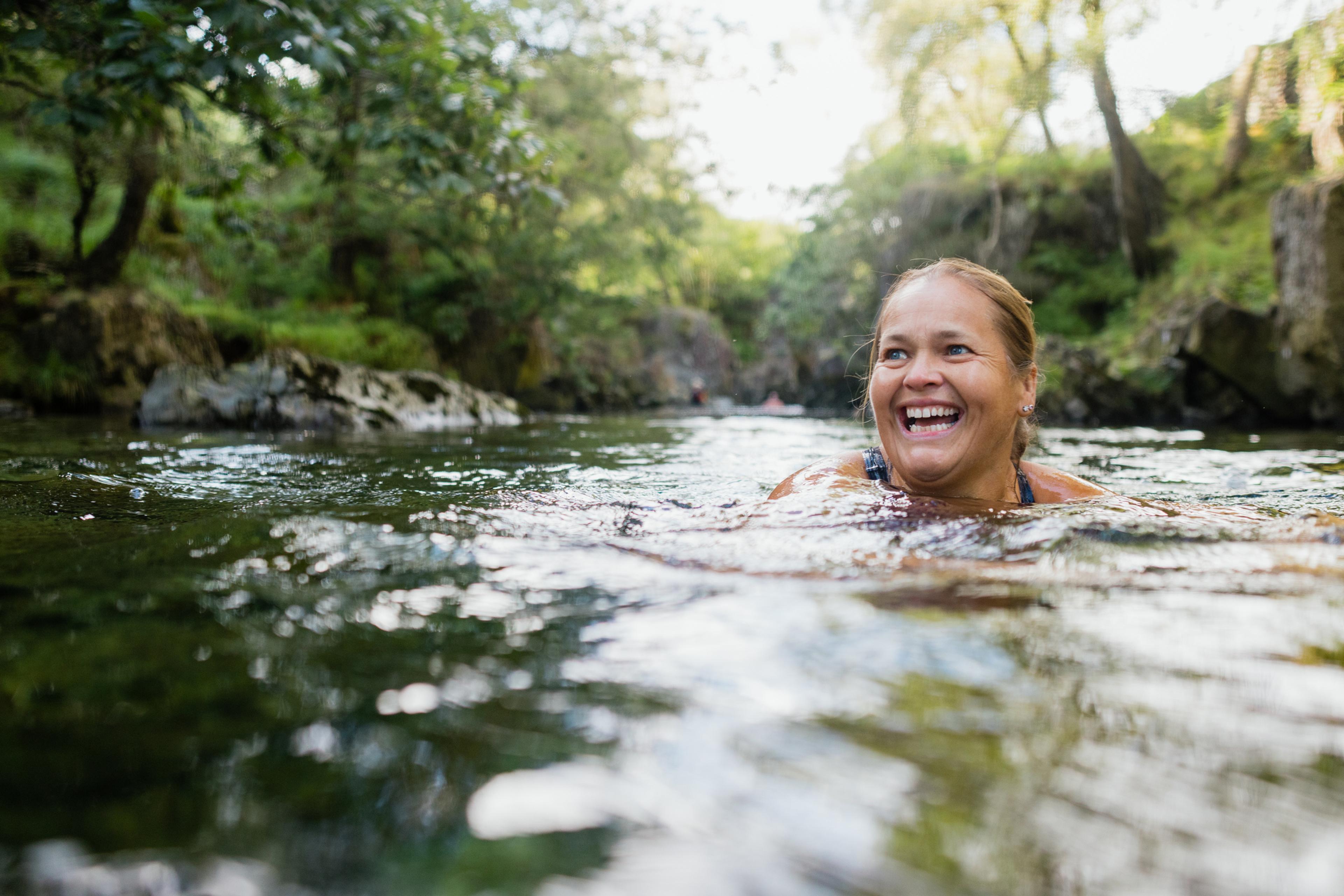What is Wild Swimming?
A Healthier Michigan
| 3 min read

Wild swimming, or open-water swimming, refers to swimming in natural waters, open water, or generally swimming outside and in natural waters. Wild swimming has become more popular in recent years, especially with Americans looking for a mental health boost, since it ties together exercise and connection with nature.
Are there benefits to wild swimming?
According to this study, there have been noted improvements in mood states and overall wellbeing tied to open water swimming, including:
- a boost in mood, mood regulation and emotional wellbeing
- reduced tension, anger, fatigue, and depression & anxiety
- positive and even therapeutic experiences in nature
It is important to note that where you swim also can impact the benefits from wild swimming, as many rivers, waterfronts, and waterways are polluted and would not be a safe or healthy environment for swimming. The previous study was performed based on multiple other studies on swimming activities in rivers, lakes, ponds, seas, and reservoirs, which were safe to swim in. The CDC has a water quality information resource you can use to monitor the water quality in your area.
Swimming itself is a great low-impact cardio exercise that can also work effectively as strength training. Many benefits of regular swimming have been well-researched and documented and according to the CDC include: include:
- decrease in risk of chronic illness
- improved health for people with heart disease and diabetes
- reduce arthritis or joint pain
- mental health improvements
- decreased anxiety and depression symptoms
Regular swimmers also have half the risk of death as non-active individuals, according to the CDC.
Where do people go wild swimming?
The most common places for open-water swimming include oceans, lakes, ponds and rivers. According to the CDC, each year millions of Americans spend time in natural bodies of water, either swimming or using it recreationally to play, float, wade, etc. It is important to keep safety first in mind while wild swimming or open-water swimming.
How to be safe while wild swimming or open-water swimming
There are differences when swimming outdoors and in natural waters, compared to swimming indoors or in enclosed water. Being aware of your surroundings and familiar with the water you are swimming in are extremely important. According to the National Drowning Prevention Alliance, the top 10 open water safety tips include:
- swim in a designated swimming area
- when in doubt, get out of the water
- know water and weather conditions ahead of time
- never swim alone
- wear and use proper equipment
- understand how currents work
- do not drink alcohol
- have US Coast Guard approved life vests
- have an emergency plan
- swim parallel to the shore





